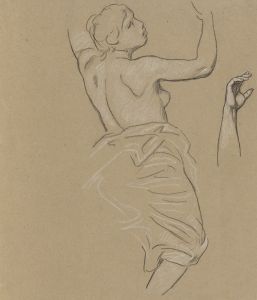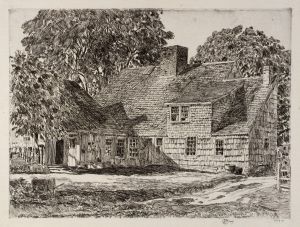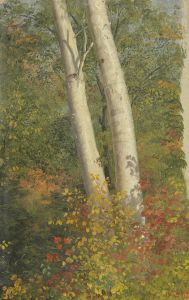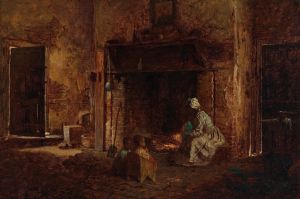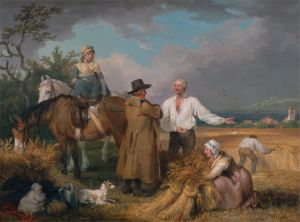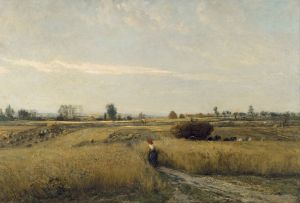
Cranberry Pickers, Nantucket
A hand-painted replica of Eastman Johnson’s masterpiece Cranberry Pickers, Nantucket, meticulously crafted by professional artists to capture the true essence of the original. Each piece is created with museum-quality canvas and rare mineral pigments, carefully painted by experienced artists with delicate brushstrokes and rich, layered colors to perfectly recreate the texture of the original artwork. Unlike machine-printed reproductions, this hand-painted version brings the painting to life, infused with the artist’s emotions and skill in every stroke. Whether for personal collection or home decoration, it instantly elevates the artistic atmosphere of any space.
"Cranberry Pickers, Nantucket" is a painting by the American artist Eastman Johnson, created in 1880. Johnson, born in 1824, was a prominent figure in 19th-century American art, known for his genre scenes, portraits, and depictions of everyday life. He was a co-founder of the Metropolitan Museum of Art in New York City and is often referred to as the "American Rembrandt" due to his skillful use of light and shadow.
The painting "Cranberry Pickers, Nantucket" captures a moment in the lives of cranberry harvesters on the island of Nantucket, Massachusetts. This work is part of Johnson's broader interest in depicting rural and domestic scenes, which provide a window into the social and cultural fabric of America during his time. The painting portrays a group of individuals, including women and children, engaged in the labor-intensive process of cranberry picking. The scene is set in a cranberry bog, a common sight in Nantucket, which was known for its cranberry industry.
Johnson's attention to detail and his ability to convey the textures and colors of the landscape are evident in this work. The figures are depicted with a sense of realism and empathy, highlighting the physical demands of their work while also capturing the serene beauty of the natural environment. The use of light in the painting enhances the overall composition, creating a warm and inviting atmosphere that draws the viewer into the scene.
The painting is significant not only for its artistic qualities but also for its historical context. During the late 19th century, cranberry harvesting was an important economic activity in Nantucket and other parts of New England. Johnson's depiction of this scene provides valuable insight into the working conditions and daily lives of the people involved in this industry. It also reflects broader themes of labor, community, and the relationship between humans and their environment.
"Cranberry Pickers, Nantucket" is part of the collection at the Timken Museum of Art in San Diego, California. The museum, known for its collection of European and American masterpieces, acquired the painting as part of its mission to preserve and display significant works of art. The painting remains an important example of Eastman Johnson's contribution to American art and his ability to capture the essence of 19th-century life.
In summary, "Cranberry Pickers, Nantucket" by Eastman Johnson is a notable work that combines artistic skill with historical significance. It offers a glimpse into the lives of cranberry harvesters in 19th-century Nantucket, showcasing Johnson's talent for depicting everyday scenes with realism and empathy. The painting continues to be appreciated for its beauty and its portrayal of a vital aspect of American history.





